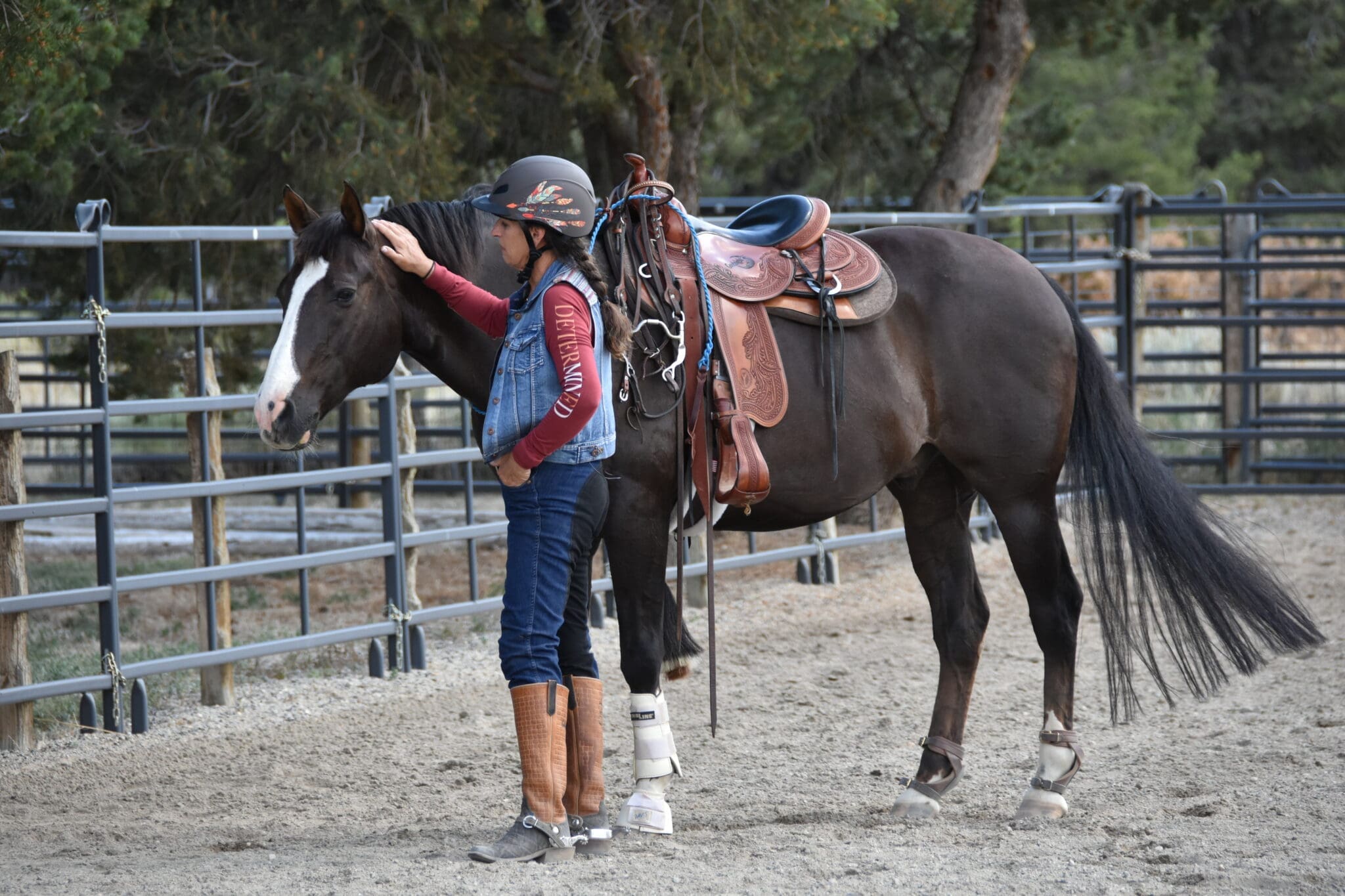
Duke was a well-trained gelding, successful in the show ring as a youngster, then ridden extensively in the rugged mountains of Colorado. He was a handsome hunk of muscle, very balanced, always a delight to ride and safe to handle. But at the age of 16, after six months in winter pasture, he wasn’t the same horse.
In May, I picked him up from the large ranch where his owners had boarded him for the winter. The horse was turned out in a large herd on a fifteen-hundred-acres, with little handling. At first, he was easy to catch and seemed happy to see me, but once we turned toward the truck and away from the herd, the easy-going, well-trained gelding suddenly resembled a thousand-pound toddler throwing a tantrum.
The farther away from the herd we got, the more emotionally distraught Duke became—prancing, looking around, shaking his head, eyes white, nostrils flared and screaming bloody murder for his friends. In the moment, my scolding and attempt at groundwork did little to reset his brain.
Duke’s connection to the herd was strong and his misery was intense. He made it abundantly clear he had no interest in me. The gelding fussed, stomped, and screamed throughout most of the 100-mile drive to my barn. I knew I had my work cut out for me, to break the instinctive herd-connection, remind him of his training, and re-connect him to people. Horses are relationship-oriented animals with an instinctive need for acceptance to a herd and to form bonded connections to other individuals in the herd (we call them “buddies” and behaviorists call them “associates”). Cultivating that same sense of connection between horse and human is very attainable. For me, it is the ultimate partnership I want to have with a horse—one in which the horse feels safe and wants to be with me, is eager to please, hungry for my praise and willing to follow me anywhere. I’ve worked with lots of riders in my horsemanship clinics and through my online coaching programs who are striving for a better connection with their horse too. Sometimes they are rebuilding confidence after a bad experience, and both horse and rider need to develop trust in each other again. Or maybe it’s a new horse or one that’s coming back into training after a long layoff from illness or injury; or maybe the horse has been idle because the human in its life was simply absent.
There are many reasons why a person might need to establish (or re-establish) a connection with a horse. Forging a partnership between horse and human and developing a bonded relationship brings greater satisfaction and more accomplishment. Here, I’ll show you the steps I took to reconnect with Duke and share some tips that you might use to connect with the four-legged friend in your life.
Separation Anxiety
Without much separation, the herd becomes the horse’s entire world. From the herd, the horse gets a sense of safety and comfort. There’s law and order, a capable leader calling all the shots, a daily regimen to follow, and buddies to cover your back. Obviously, walking away from all of that is not easy for a horse—a prey animal—who lives in fear of being eaten. Rarely will separating a herd-bound horse be easy or quiet, but it is a necessary step to take before the horse will transfer the same feelings he gets from the herd to a person.
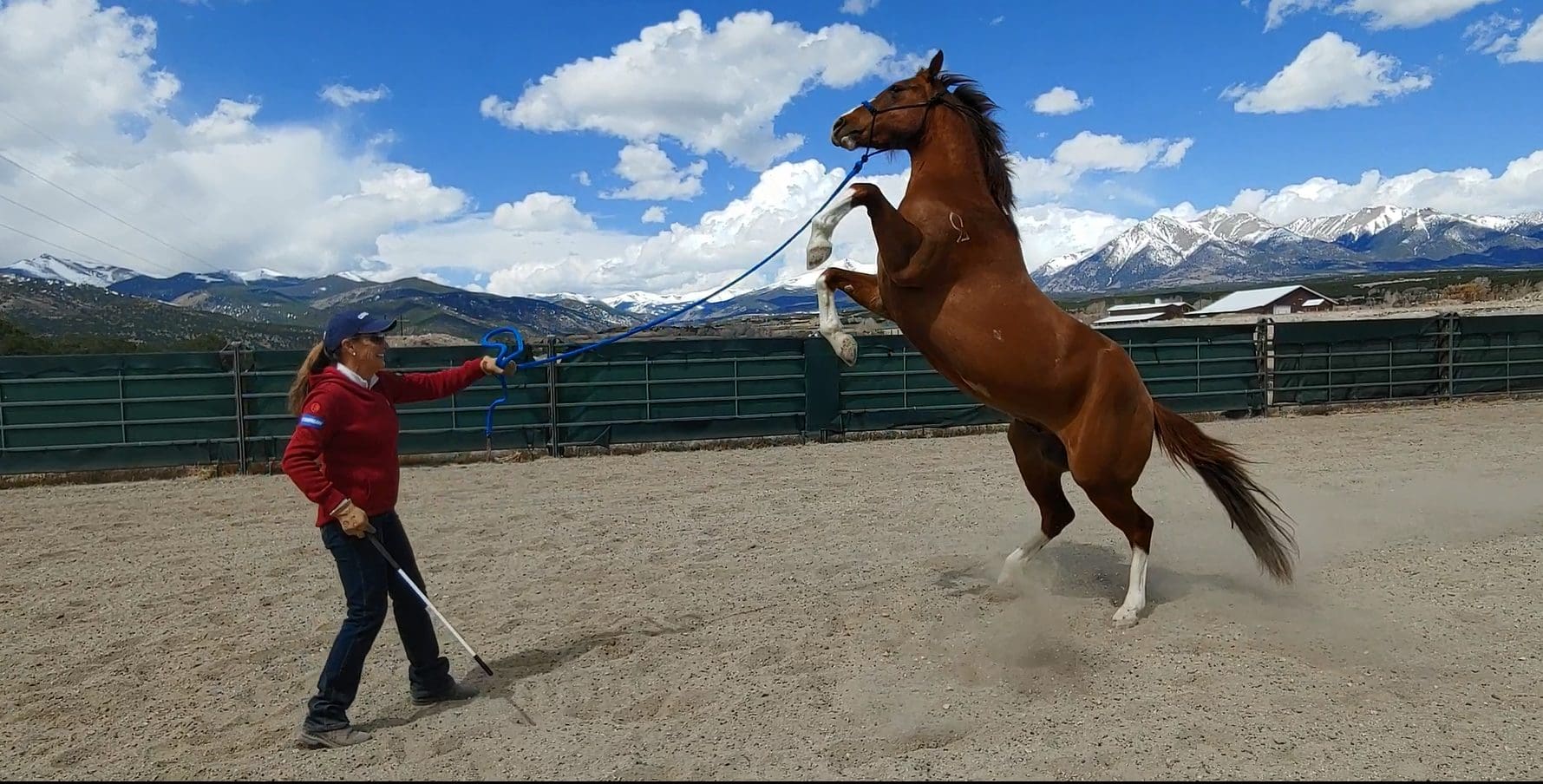
For Duke, it was easy since we put him in the trailer and physically distanced him from the herd. Out of sight and out of ear shot, the severing of herd ties is easier and faster, although the horse will still feel some separation anxiety. The most difficult scenario for dealing with herd-bound horses occurs when you cannot physically separate them from the herd—when they can still see and/or hear the herd– it’s a constant reminder to the horse that he is separated and vulnerable.
We always isolate new horses that come to my facility, for health reasons, but it helps a lot with resolving separation anxiety too. I put them in their own comfortable pen, where they can see the other horses but not get close to them. Then for two weeks, the only interaction the horses have is with the people that feed them and clean their pen. People start to seem a lot more appealing to a horse when they bring comfort and apply no pressure.
Initially, we won’t dote on the horses in isolation or try to make friends with them, but we take care of their basic needs and are there if they need us or want interaction. Within a week or less, we can see the horses changing their minds about who is important in their lives and humans become much more appealing. Once a horse starts looking more longingly for interaction with us, we start spending more quality time with the horse, giving it the interaction, routine and enrichment it seeks.
Allowing horses to work through their anxiety and grief at losing the herd, before expecting them to show interest in people, is important. A horse cannot be trained unless he is calm, focused and thinking. But as soon as the horse shows acceptance of its fate and begins to look around for a new deal I want to step in and fill the void.
If physical separation from the herd is not possible, this job can get harder and may take longer. I still separate the horse I am trying to connect with every day for an hour or more. There will be fussing, fidgeting, and hollering. Depending on the horse, I may tie it up in a comfortable place and let it fuss. I will wait until the horse is quiet and patient before turning it back with the herd. I will make this a routine for the horse—same time, same place, same activity every day, because horses take comfort in sameness.
If tying the horse is not reasonable, because the horse is not trained to tie, I may have to keep it busy during this separation time, doing lead-line work, round penning, or going for a walk. Movement is often better for anxious horses, rather than standing still. Over time, horses get comfortable with a routine and begin to fear separation less.

Getting past the initial separation anxiety is the hardest part of establishing a connection with a horse and it may take a while, depending on the horse and circumstances. Keen observation of the horse during this time, will show me when the horse starts to look for new attachments. That’s my cue to step in and start doing more with the horse—more friendly activities like grooming and providing enrichment. At this stage, the horse will start transferring his feelings of attachment to me and begin to look to me for leadership.
Establishing Boundaries & Expectations
Horses know leadership when they see it and they seek it out. In the presence of a strong leader, horses feel safe, protected, and accepted. As soon as the horses are past the initial shock of being separated from the herd, I want them to learn they can count on me to take care of them and keep them safe. Keeping the horse isolated from the herd, with humans providing its food, water and care, the horse begins to look to humans as their new herd.
Whether a horse is new, or you are reconnecting after a long hiatus, the first impressions and the initial precedents you set are critical and they will form the basis of your relationship with the horse going forward. If you tolerate unsafe or rude behavior initially, you will set a precedent that is difficult to undo.
I want to teach horses what my expectations of their behavior are, by establishing boundaries and controlling their actions and movements through groundwork; disallowing tantrums and emotional outbursts, not through punishment, but by redirecting their energy and actions elsewhere. Duke was a well trained and experienced horse that had become herd-bound due to circumstance. When the horse has training to fall back on, establishing boundaries and expectations can go very quickly. The horse already knows the rules; but is rusty on them. For Duke, once separated, all it took was a few days of groundwork, tying, and revisiting the basics of his training before he fell right back into his groove. Reminding trained horses of what they know, can almost be a relief for the horse if they have separation anxiety. Duke was happy to get back to the regimented life that he once knew and eagerly accepted my authority and leadership.
Establishing boundaries immediately with an unruly horse is not only important for my personal safety, but also for establishing my authority with the horse. In the herd, horses establish dominance by controlling the space and actions of subordinates. If I allow horses to move into me or act as if I am not there, in their minds, they are in charge. This can happen on the very first incident. At any time the horse moves into me, slings its head at me, or gets ahead of me, I will immediately scold the horse, back it up and move it away from me. I am 100% clear on my personal boundaries and my expectations of its behavior, and that is immediately impactful to the horse.
If you want to learn more about how to handle a pushy horse, how to make your boundaries clear, or about the horse honoring boundaries while leading, watch my “Establishing Boundaries” and “Leadline Boundaries” videos here.
Communicating your expectations to the horse presumes you have clear expectations. I expect my horses to voluntarily be present with me, not looking around for an exit or threatening to leave. I expect them to be focused on me and what I am asking or focused on nothing. I expect them to stand still when I ask, never invade my personal space, and to always display safe and pleasant manners when I am around them. Armed with the right equipment for groundwork (rope halter, training lead, training stick or flag if needed) and the information you need to teach basic ground manners, this can go really fast.
Establishing boundaries and communicating your clear expectations to the horse should happen right away upon your first interaction with the horse. The precedents you set on that initial encounter (which I often refer to as the “golden moments”), the impressions you give the horse about your confidence level and leadership, your tolerance or intolerance of certain behaviors, your strength, consistency and fairness, will make a huge impact on the horse. The horse learns rapidly (way faster than humans, as far as I can tell) and you cannot unmake first impressions.
Good Leadership Generates Good Followership
The Alpha Individual is a strong, confident, and capable herd leader. In a horse herd, the Alpha may be male or female, and their responsibilities are to protect the herd, motivate the herd to flight, should it be necessary, to maintain law and order in the herd, and to budget time for the herd to eat, drink and sleep. Horses crave strong leadership, they recognize it easily, and they feel safe and content in its presence. My goal in connecting with horses is to have them voluntarily hook onto me and want to be with me, no matter where I go. But first the horse must get from me, the same sense of safety and comfort it gets from the herd. The voluntary behavior I seek from the horse, begins with my own behavior—I need the horse to see me as the strong leader it craves.
I must be confident, calm, and communicate my expectations clearly. To be the leader horses crave, I must take care of their physical needs and be consistent and fair in administering both praise and admonishment. Most of all, I must keep the horses safe (emotionally and physically) and never ask more than they can give me. This is how horses make us better people.
More than anything, horses want to feel safe and taken care of. They appreciate order, routine and sameness, because that makes them feel safe. When horses are displaying emotionality, especially anxiety, they are not happy. But they don’t know how to act differently in that moment—their emotions have taken control.
When Duke was having his emotional meltdown upon leaving the herd, I knew I had a job ahead of me. I had to contain his behavior in the moment, while showing confidence, remaining calm and focused on the task, remind him of his manners, and bring some sense of order to the scene.
Once home at my ranch, it was easy to reconnect with Duke, since he was quarantined from other horses and his food and water, and his clean and comfortable accommodations, came directly from me. After a few days to settle in, he began to recognize me as an important figure in his life. Then it was time to start setting some precedents in terms of his behavior, starting with the basics, and reminding him of his previous training.

One thing I know about horses, is that they will always act like horses. They know and understand horse behavior and herd dynamics; who’s in control and who is not. They are keenly observant of body language and intent, and they learn wickedly fast, for better or for worse. These attributes of horses are always present, and can be either an advantage or disadvantage, depending on how it’s handled.
To establish a meaningful connection with a horse, means understanding its natural behavior, being clear and confident about your expectations, being fair and consistent in your praise and admonishment, and going back to basics in training. It means having reasonable expectations, neither too low or too high, and giving the horse the time it needs to adjust to a new situation.
It’s a tall order and will require some dedication to the cause. But in the end, having that bonded relationship, where the horse looks up to you, wants to be with you and is eager to please you, will make all your efforts worthwhile.
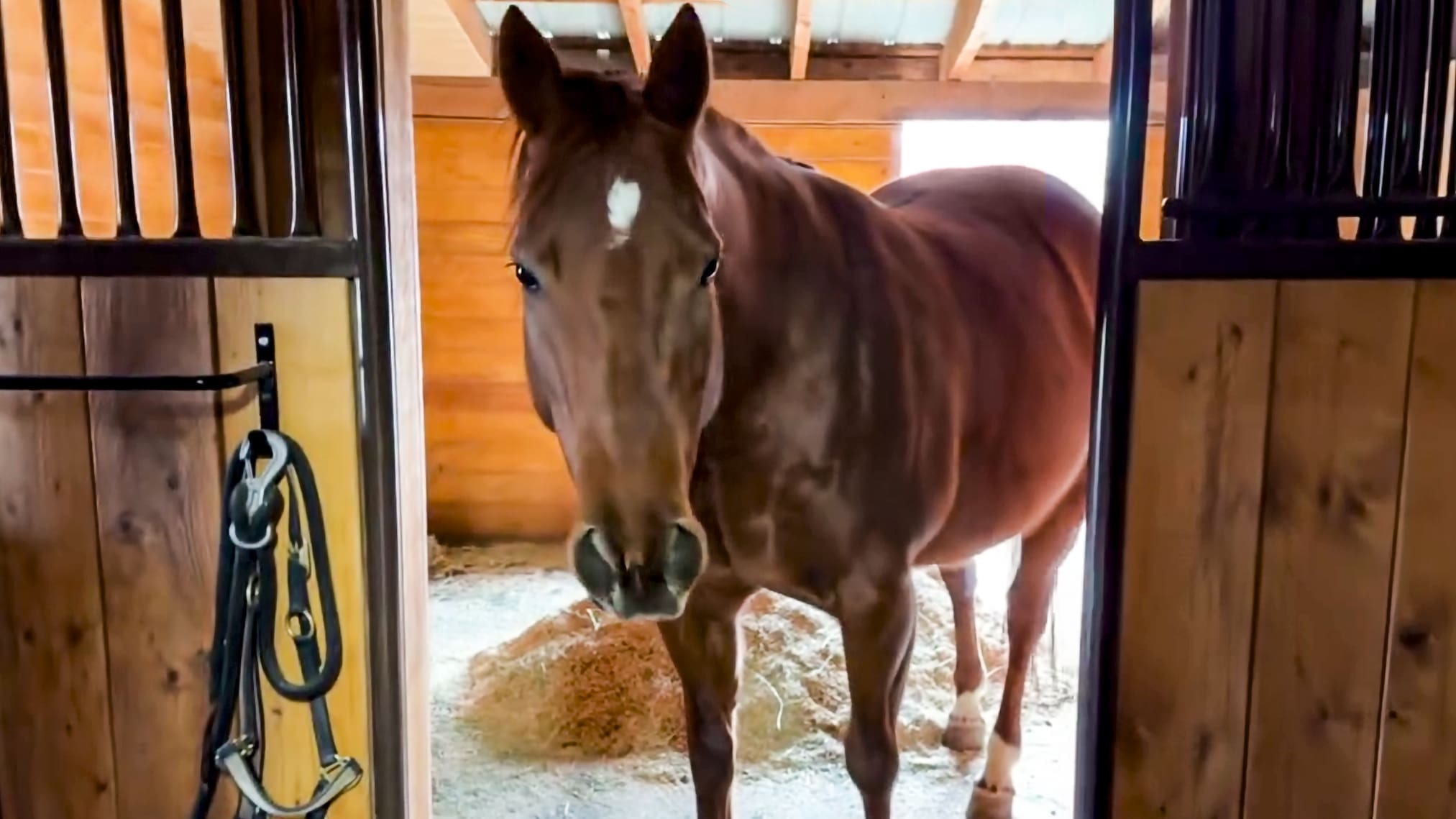
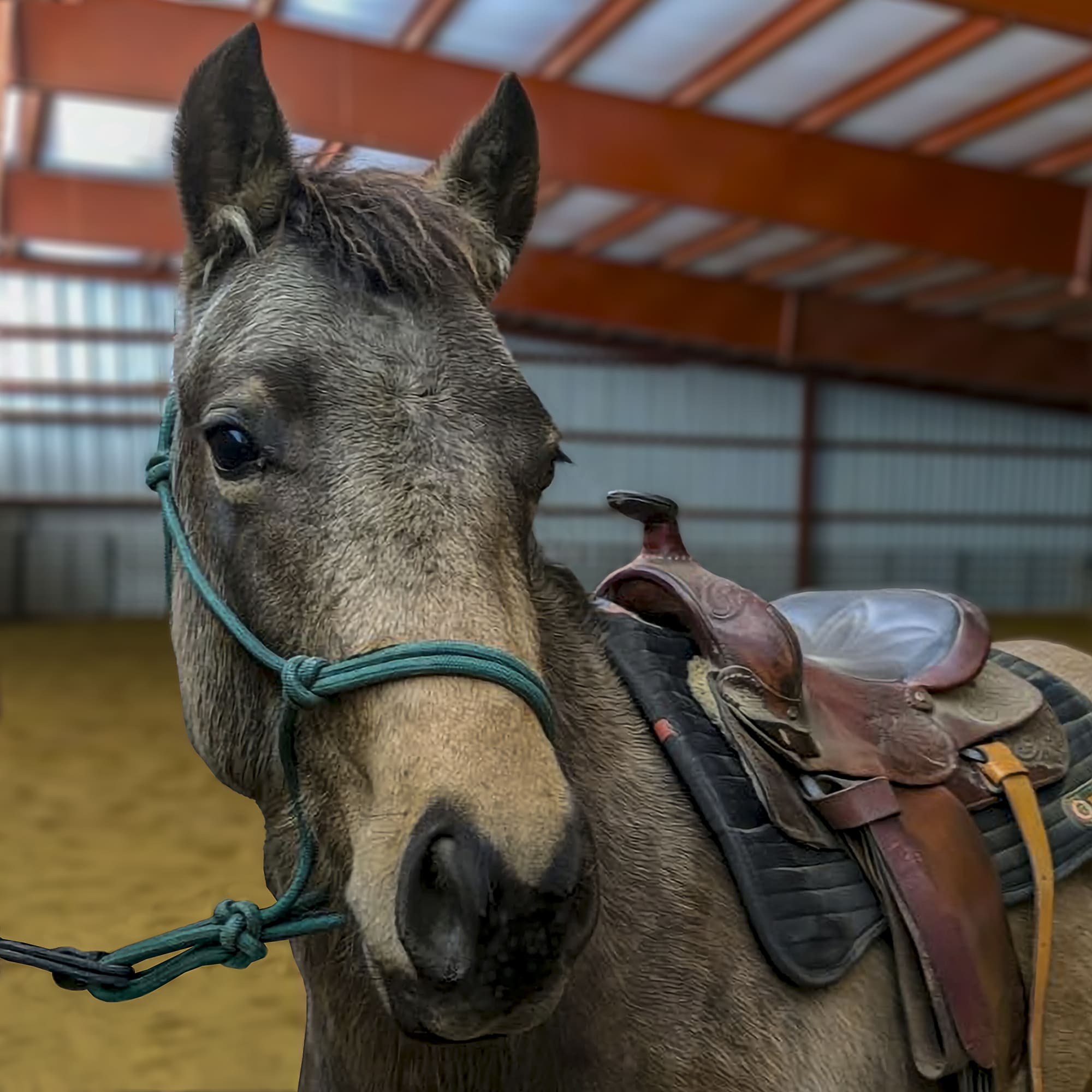
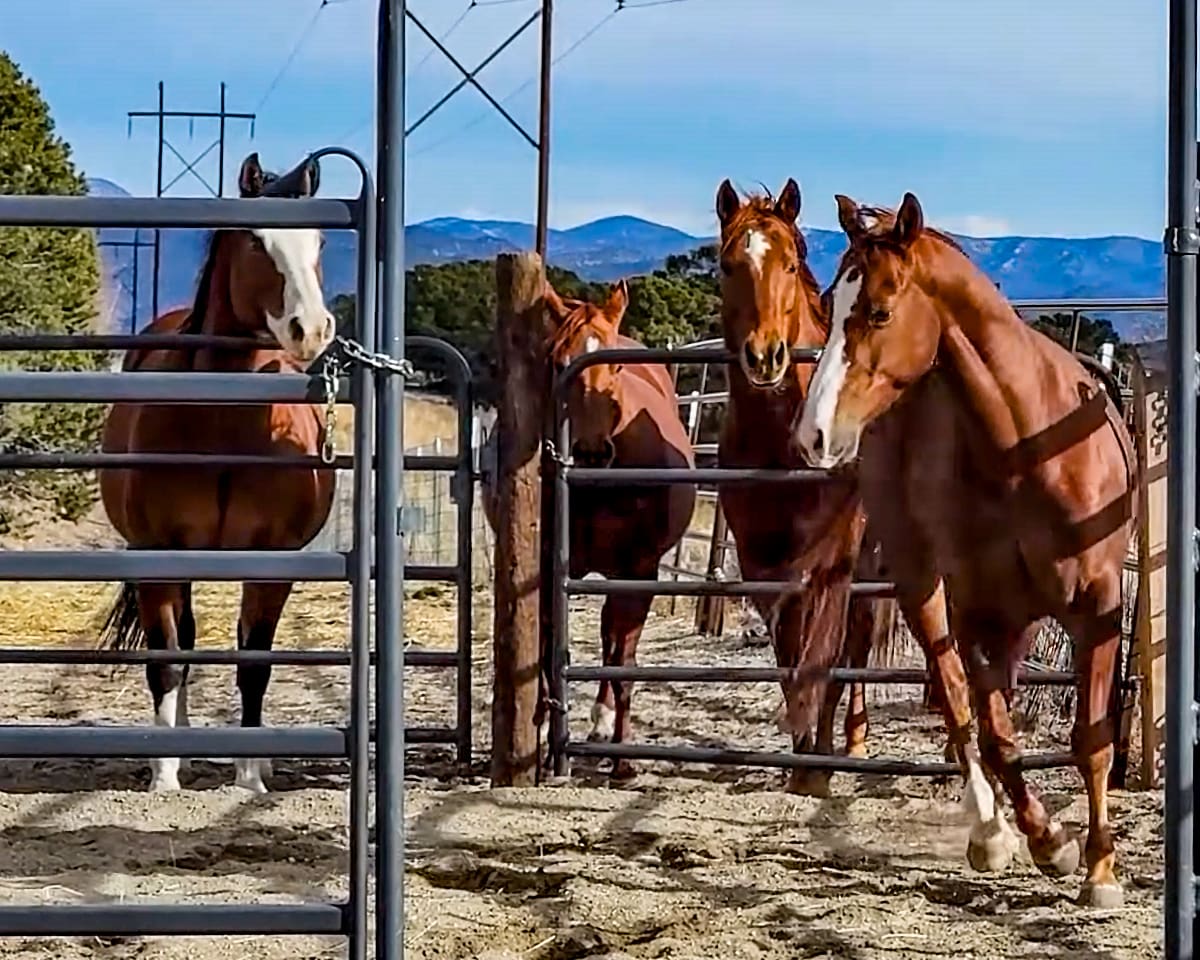

3 Comments
Thank you for “Secret Powers are Within You.” So many things to know about horses and our connection that have little to do with training “techniques.” This was very beneficial. The article on “Creating Connection” was great, too. Wanted to take this time to thank you for all the time and training you have us during the “year of the pandemic.” Very generous of you, Julie. I looked forward to those moments very much. God bless. Patti Jensen
I have a similar situation with my new 12 yo horse. Sam is trained eventer/ dressage/ foxhunter and has bad habit of pulling away from handler and running off. He has a technique that is hard to counter and he gets away which is dangerous, and I believe was sold due to this behavior. How can I correct?
Hi Travis! Listen to the episode of the Ride On with Julie Goodnight called “Horses That Rip & Run.” (Go to JulieGoodnight.com/podcast) That episode addresses this topic exactly! You can also use the search feature to find articles and an episode of Horse Master that deals with this issue. Good luck!